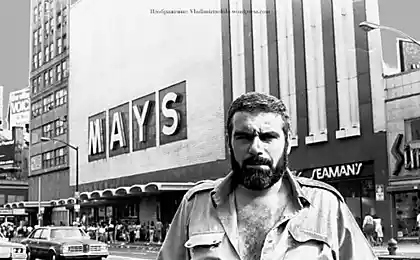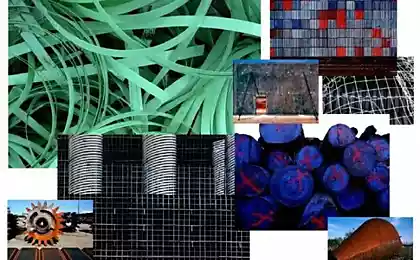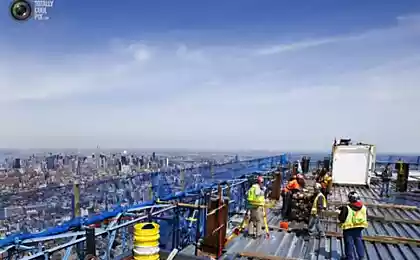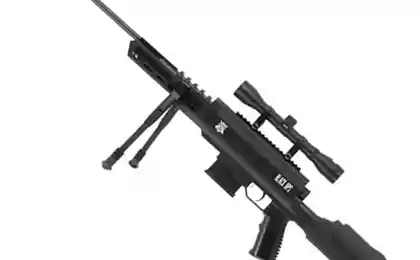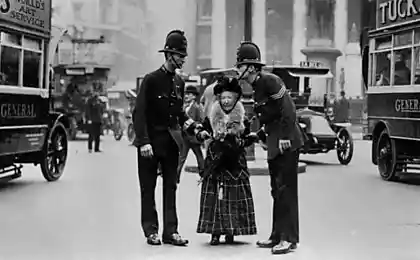969
New York air mail
One hundred years ago, the pipes under the Manhattan bridge with the speed of 35 miles per hour flying capsule-mail - so the system worked Mailpipe - New York air mail.
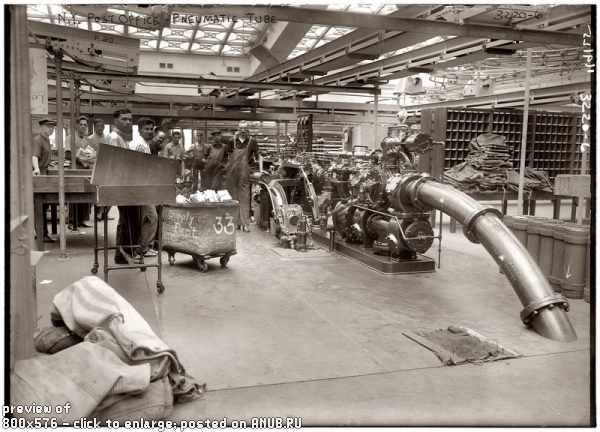
New York pneumomail correspondence promptly delivered to the post office at any time, in any weather, avoiding traffic jams.
About 27 miles of steel pipes were laid underground from Battery Park to Harlem and back through Times Square, Grand Central Station and the Central Post Office. Eight-inch pipes were laid at a depth of 1-3 meters in two lines - one for transmission and one for reception.
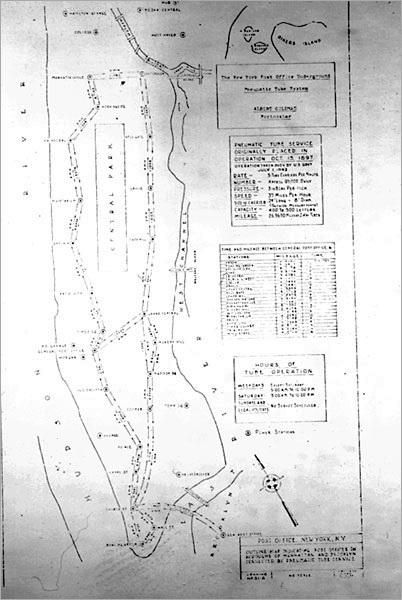
The central post office to sort, stamping, fit into the cylindrical containers and the capsule was sent into the pipe.
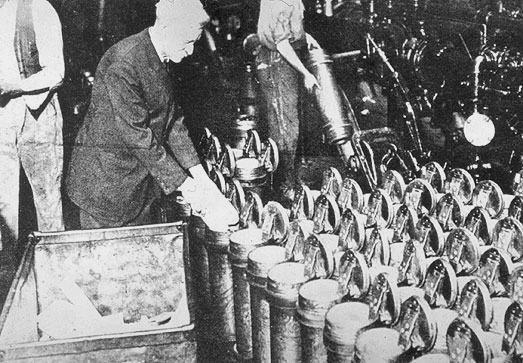
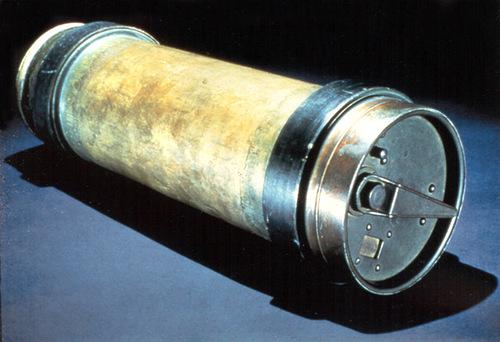
Compressor air is pumped into the tube, which drove the capsule to its destination. The path across the surface occupied forty minutes, the container Mailpipe flew seven. Each capsule can accommodate up to 600 letters, the total mass delivered in the city of mail reached 3 tons per day.
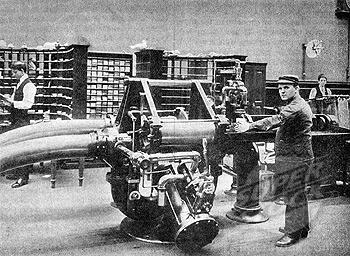
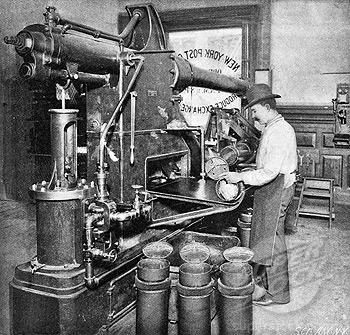
Recalls Nathan Halpern, a veteran of the postal service: "I still remember those containers, which jumped from pipes. They came about once a minute and were a bit warm, lubrication »
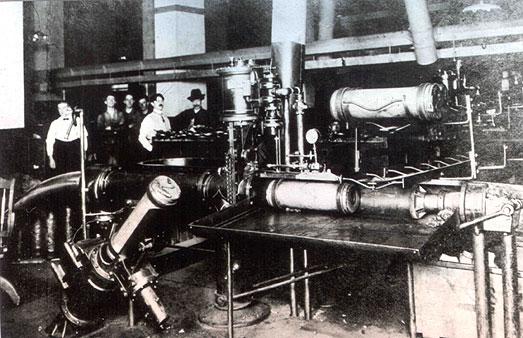
Not all the administration used the privilege - especially underground traveled first class letters, others could send in the old way - horse trailers.
Building New York Mailpipe began in the late 1890s, in 1898 it was put into operation. Chief US Postmaster Charles Emory Smith predicted then that one day he was pneumatic equip each apartment. The enthusiasm was so great that at the turn of XIX-XX centuries even have a few suggestions for the pneumatic piping between America and Europe.
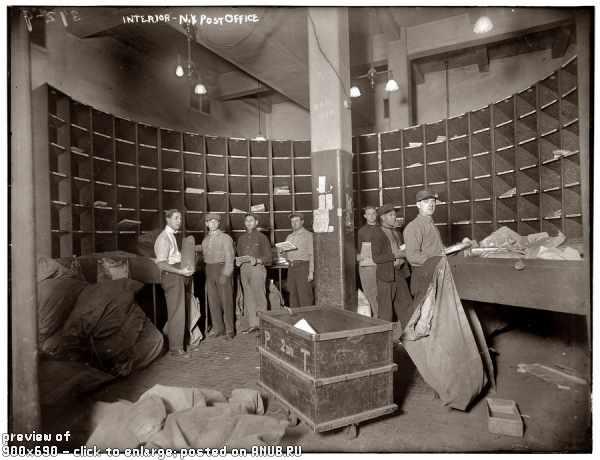
Pneumatic destroyed car, and finished off the lights. Commercial Vehicle was slightly slower than the capsule, but could accommodate a lot more letters and was a lot cheaper to operate. Identify and other shortcomings Mailpipe - for example, if the post office moves, you need to open pavement and re-transfer pipe
However, in the New York system lasted long enough (on the right portion of the image receiving device pneumatic)
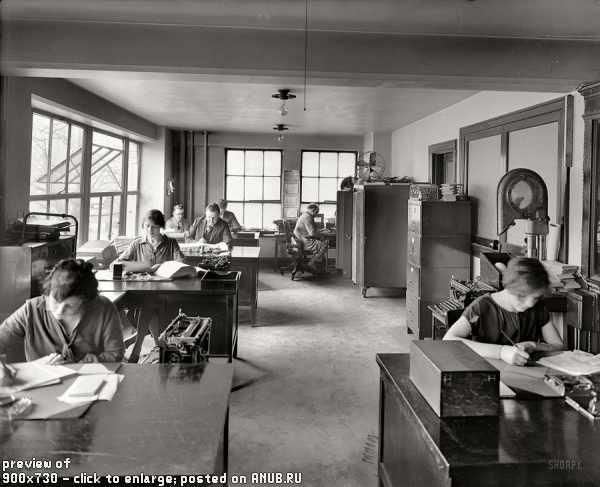
Only in the 1953 service stopped its work in anticipation of a decision on its further destiny, so much so more than ever and has not been started.

New York pneumomail correspondence promptly delivered to the post office at any time, in any weather, avoiding traffic jams.
About 27 miles of steel pipes were laid underground from Battery Park to Harlem and back through Times Square, Grand Central Station and the Central Post Office. Eight-inch pipes were laid at a depth of 1-3 meters in two lines - one for transmission and one for reception.

The central post office to sort, stamping, fit into the cylindrical containers and the capsule was sent into the pipe.


Compressor air is pumped into the tube, which drove the capsule to its destination. The path across the surface occupied forty minutes, the container Mailpipe flew seven. Each capsule can accommodate up to 600 letters, the total mass delivered in the city of mail reached 3 tons per day.


Recalls Nathan Halpern, a veteran of the postal service: "I still remember those containers, which jumped from pipes. They came about once a minute and were a bit warm, lubrication »

Not all the administration used the privilege - especially underground traveled first class letters, others could send in the old way - horse trailers.
Building New York Mailpipe began in the late 1890s, in 1898 it was put into operation. Chief US Postmaster Charles Emory Smith predicted then that one day he was pneumatic equip each apartment. The enthusiasm was so great that at the turn of XIX-XX centuries even have a few suggestions for the pneumatic piping between America and Europe.

Pneumatic destroyed car, and finished off the lights. Commercial Vehicle was slightly slower than the capsule, but could accommodate a lot more letters and was a lot cheaper to operate. Identify and other shortcomings Mailpipe - for example, if the post office moves, you need to open pavement and re-transfer pipe
However, in the New York system lasted long enough (on the right portion of the image receiving device pneumatic)

Only in the 1953 service stopped its work in anticipation of a decision on its further destiny, so much so more than ever and has not been started.







